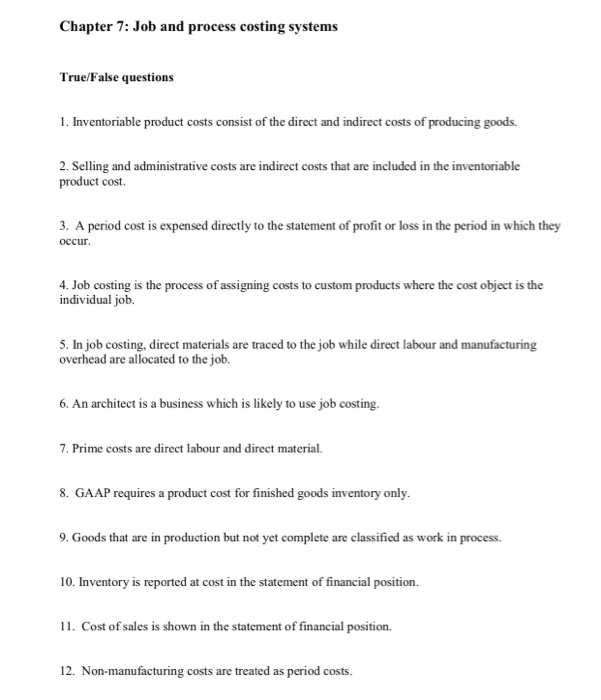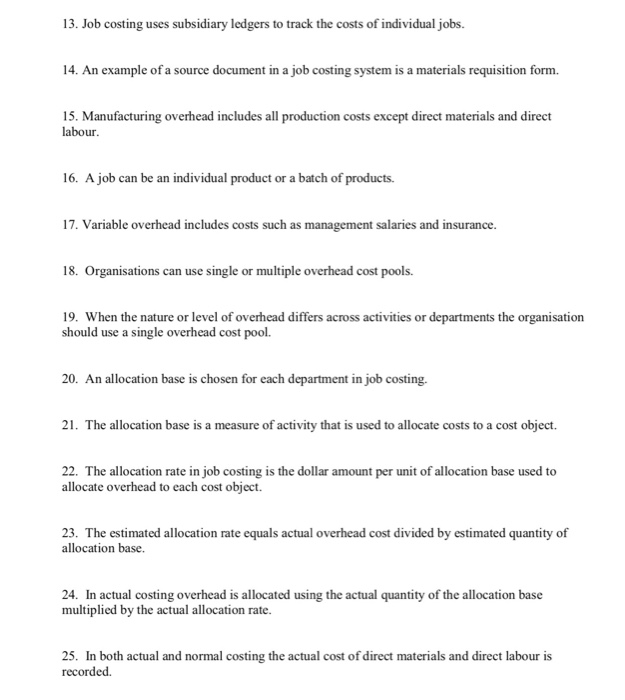Chapter 7: Job and process costing systems True/False questions 1. Inventoriable product costs consist of the direct and indirect costs of producing goods. 2. Selling and administrative costs are indirect costs that are included in the inventoriable product cost. 3. A period cost is expensed directly to the statement of profit or loss in the period in which they occur 4. Job costing is the process of assigning costs to custom products where the cost object is the individual job. 5. In job costing, direct materials are traced to the job while direct labour and manufacturing overhead are allocated to the job. 6. An architect is a business which is likely to use job costing. 7. Prime costs are direct labour and direct material. 8. GAAP requires a product cost for finished goods inventory only. 9. Goods that are in production but not yet complete are classified as work in process. 10 Ianvantory is nportedf 11. Cost of sales is shown in the statement of financial position 12. Non-manufacturing costs are treated as period costs. 13. Job costing uses subsidiary ledgers to track the costs of individual jobs. 14. An example of a source document in a job costing system is a materials requisition form. 15. Manufacturing overhead includes all production costs except direct materials and direct labour. 16. A job can be an individual product or a batch of products. 17. Variable overhead includes costs such as management salaries and insurance. 18. Organisations can use single or multiple overhead cost pools. 19. When the nature or level of overhead differs across activities or departments the organisation should use a single overhead cost pool. 20. An allocation base is chosen for each department in job costing. 21. The allocation base is a measure of activity that is used to allocate costs to a cost object 22. The allocation rate in job costing is the dollar amount per unit of allocation base used to allocate overhead to each cost object. 23. The estimated allocation rate equals actual overhead cost divided by estimated quantity of allocation base. 24. In actual costing overhead is allocated using the actual quantity of the allocation base multiplied by the actual allocation rate 25. In both actual and normal costing the actual cost of direct materials and direct labour is recorded








